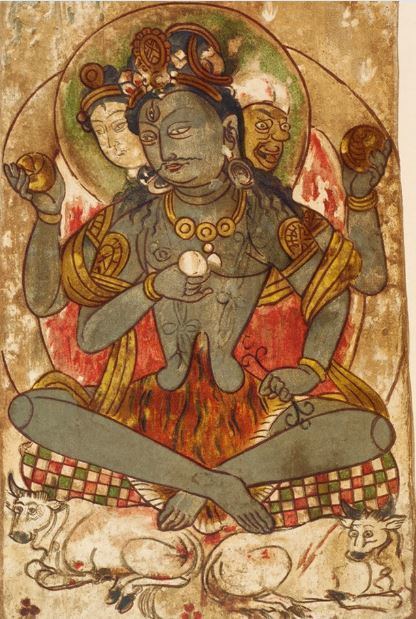 | ||
Yuchi Yiseng (traditional Chinese: 尉遲乙僧; simplified Chinese: 尉迟乙僧; Wade–Giles: Yü4-chʻih2 I3-sêng1; pinyin: Yùchí Yǐsēng) or Viśa Īrasangä (his Saka name), was a Khotanese painter during the Tang dynasty. He was also a Khotanese nobleman, but sometimes he is considered to be a Tocharian originated from the north of Afghanistan. His father Yuchi Bazhina (尉遲跋質那) was known for paintings during the Sui dynasty, he is called "Yuchi the Elder" (大尉遲). Thereby Yuchi Yiseng is called "Yuchi the Younger" (小尉遲). His painting skills were often compared with Yan Liben, even the well-known painter Wu Daozi was under his influence.
Yuchi Yiseng was very good at painting Buddhist and foreign exotic portraits. He came to the Chinese court in the mid 7th century. He brought a new painting style of Iranian origin and had profound influence in Chinese Buddhist art. He was credited with having helped bring the Western technique of using a line of unvarying thickness to outline figures -- the "iron-wire" line -- to the Buddhist temples in many Chinese cities.
